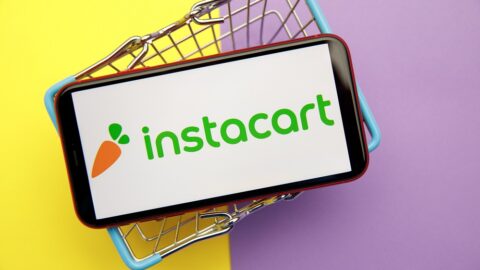 During its annual Dreamforce event in San Francisco in November, Salesforce doubled down on its mission to help retailers create more immersive and relevant customer experiences across all channels. Touting success stories from Adidas, Party City and Suitsupply, the company’s SVP of Retail, Shelley Bransten, helped transform some of the hottest buzzwords in retail — “personalization” and “AI” — into tangible, real-world tools for retailers’ toolkits.
During its annual Dreamforce event in San Francisco in November, Salesforce doubled down on its mission to help retailers create more immersive and relevant customer experiences across all channels. Touting success stories from Adidas, Party City and Suitsupply, the company’s SVP of Retail, Shelley Bransten, helped transform some of the hottest buzzwords in retail — “personalization” and “AI” — into tangible, real-world tools for retailers’ toolkits.
A few weeks later, during the heart of the holiday shopping season, Bransten spoke to Retail TouchPoints to discuss:
- The rise and impact of AI;
- The touch points and consumer behaviors driving the AI revolution, including the emergence of voice and bot technologies; and
- How to prioritize AI and personalization investments in 2018.
Retail TouchPoints (RTP): What were some of the key trends and takeaways to come out of Dreamforce? Do you feel like they reflect the key trends you’re seeing within the retail industry as a whole?
Shelley Bransten: Any session that touched on AI or included “predictive” in the title had people lining up down the hall. But what’s especially interesting is that we had more retailers this year who were able to get up on stage and share real ROI of some of these predictive technologies. Now, companies are really seeing a difference using these technologies, whereas a year ago, we were just taking bets on them.
RTP: There are a lot of ways AI is being actualized to improve customer service and experiences. Which consumer trends are influencing the AI applications that are getting the most retail attention?
Bransten: With our Connected Shopper Report, we found that 40% of Millennials have now used a voice device to order a product. We’re continuing to see a lot of curiosity around voice and how it will impact businesses — from a research, discovery and service perspective. Up to 81% of shopping journeys are now crossing multiple channels in retail and I think voice is going to be an incredibly important piece of that ecosystem in a year. Bots also are garnering a lot of interest, and we’re seeing examples like Adidas’ chatbot, which helps the brand create spot-on customer service experiences.
RTP: Are there any cultural inhibitors that may be preventing retailers from taking a chance on AI and embracing these new channels that have so much personalization potential?
Bransten: I think it’s getting better, I really do. I’m seeing more retailers lean in and accelerate the desire to break down old habits.
RTP: But AI is powered by data, and retailers historically have struggled with data integration and analysis. Have you seen improvement in this area?
Bransten: We’re starting to define the world into the haves and have-nots in terms of those who are beginning to go beyond words like “omnichannel” and “personalization” — and are actually delivering. The retailers that are the “haves” are starting to catch up with the likes of Amazon. For example, Adidas saw 60% digital growth globally, and 80% in the U.S. What’s really interesting about this success story is that it took almost a year to do two things. First they did a ton of customer research to really understand what personalized, connected and fast meant to their customers. Then they integrated the underlying technology and data to deliver on the research that they did, which is usually the most painful for our customers.
It’s so hard to bring the data together to deliver these connected experiences. But companies like Adidas, which actually take the time to get the data organized so they can service that customer at the moment of need, are going to start to see a real acceleration in their business as a result.
RTP: Has this traction, coupled with the rise of AI, led to an improvement in retailers’ personalization efforts?
Bransten: Yes, I think that retailers are getting more comfortable because they’re seeing once-abstract terms like “AI” and “personalization” become more embedded in our daily lives. I always say AI and personalization are best when you don’t know it’s happening. Room & Board saw a 150% increase in conversions, just by recommending the right product to the right customer. Retailers are getting more comfortable with letting go and letting the machines do the work. Other retailers are hearing these stories from peers and are saying, “Okay, I think we can let go, too.”
RTP: How does this new phase, where retailers are finally realizing the benefits of personalization, impact the brick-and-mortar “apocalypse”?
Bransten: The apocalypse story impacts the retailers that just keep operating their brick-and-mortar stores the way they always have. But I think we’ll start to see our world divide more into two groups: On one side, we’ll have brands that can go much deeper on their experience and value proposition in stores. These brands will continue to win. On the other side of the spectrum, the stores that focus on convenience and value will become more like distribution centers. We’ll see that separation continue to take place.
RTP: Can you share an example of retailers successfully using technology to personalize the brick-and-mortar experience?
Bransten: Technology will play into the core customer needs and deliver on your brand promise. Brands must ask: Why is it worthwhile for customers to get off their couches and go into your stores? There are plenty of reasons why people do that but you have to really understand it and amplify it — and technology can be an incredible enabler to that.
There are the retailers like Suitsupply, which know a customer’s complete experience with them — what they purchased, what their measurements are and more. On the other side of the spectrum, where it’s more about value, Kohl’s is a great example. Consumers can use technology to easily access their Kohl’s Cash, and receive notifications on how much is available for their shopping trip.
RTP: Taking all of these trends into account, what should retailers think about as they prioritize their investments for 2018?
Bransten: It goes back to being very serious about mapping those critical customer journeys, and then deepening your understanding of how predictive technologies can help make things more personalized faster, and more connective to your shoppers. There is not a one-size-fits-all piece of advice where I would say, “Oh, just invest in AI, or just invest in voice.” It truly depends on what the primary journeys are and the core value proposition of your brand is. Then, understanding those key touch points, and then doubling down with technologies that can make things more personalized, more connected and faster for consumers. We found in our research that Millennials expect personalization two and a half times more than the average consumer. The reality is, new technologies are retraining customers. And when faced with a disconnected experience, customers’ patience levels are getting lower and lower.













